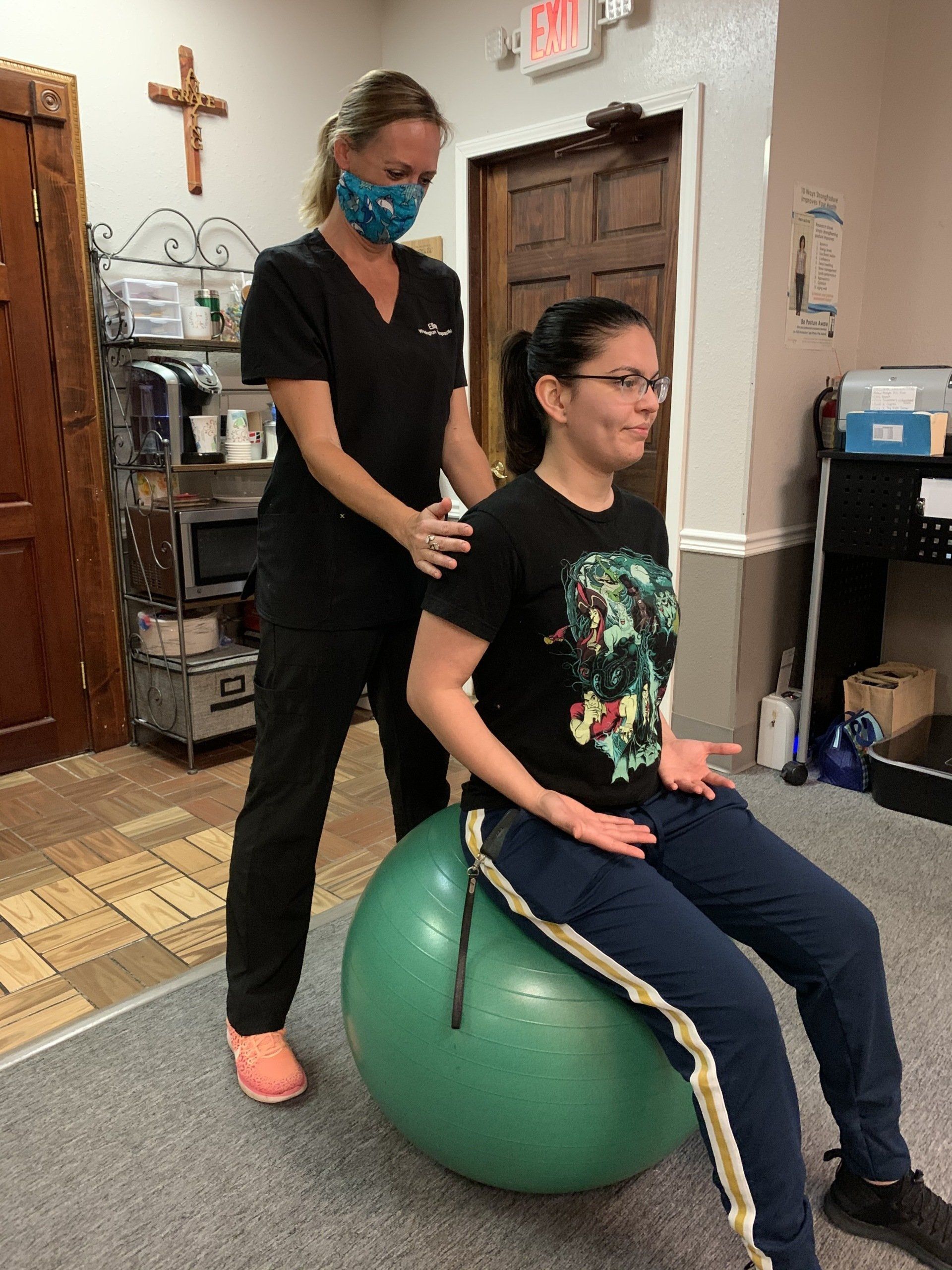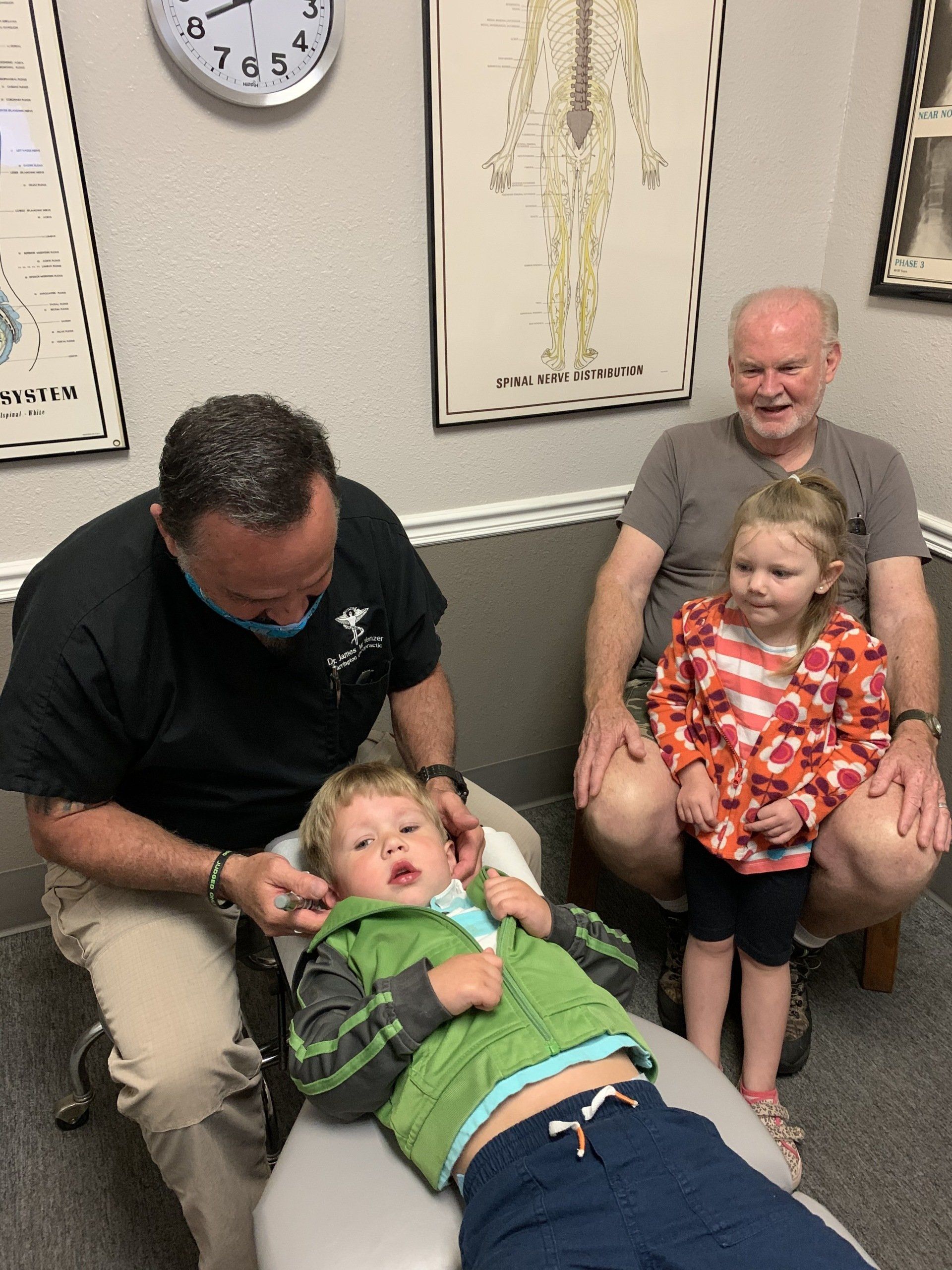
Tuesday - Thursday: 8-12 & 2 -6 Monday & Friday 8-12
Fax: 850-457-7917
FAQ
Frequently Asked Questions
Chiropractic Care is a drug free, non-invasive health care that focuses on disorders of the musculoskeletal system, the nervous system, and the effects of these disorders on general health. Doctors of Chiropractic (DCs) are physician-level providers. Educational and licensing requirements for doctors of chiropractic (DCs) are among the most stringent of any of the health care professions.
What is an adjustment?
The adjustment (sometimes referred to as a "chiropractic adjustment") is performed by a chiropractor manually applying a controlled force in order to adjust areas in the spine that are causing discomfort or problems in the body. The purpose of spinal manipulation is to gain mobility, lessen pain, and improve your body’s functioning. There are many different manipulative techniques that can be utilized in chiropractic, and there is a certain skill level and "art" involved with different adjustments or manipulations. Chiropractic adjustment rarely causes discomfort. However, patients may sometimes experience mild soreness or aching following treatment that usually resolves within 12 to 48 hours. [1]
What is that popping sound I hear when I am adjusted?
During an adjustment gases from the joint space are released. It creates a sound similar to the sound of gas being released when a soda can is opened. In general, hearing this sound during an adjustment is good. It means that the joint is moving freely. Imagine several soldiers in a field. When the commander calls attention the soldiers line up. Similarly, an adjustment moves a joint into a neutral position. It is not meant to stay in that position because a joint is movable. During an adjustment, the ease that a joint moves into that neutral position shows the health and mobility of that joint.
Is chiropractic treatment safe?
Yes! Chiropractic is a non-invasive natural way to relieve back, neck and joint pain as well as restore optimal spinal, nervous system and joint function, and health. In fact, Chiropractic is the largest natural healing profession in the world. Doctors of Chiropractic pay at least 4 times less for malpractice insurance (about $1,400/year) than a General Practitioner. Malpractice insurers would not charge chiropractors so little if chiropractic wasn’t extremely safe. You can feel confident that you will receive safe and effective treatment under chiropractic care.
Once you go to a Chiropractor, do you have to go forever?
No! Some people use chiropractic to relieve symptoms while others receive chiropractic to improve their overall health and quality of life. We try to educate our patients on the benefits of chiropractic care and allow each person to decide on the treatment that is right for them. Levels of chiropractic care include relief care (symptom oriented), corrective care (correcting subluxation) and health enhancing care (fostering optimum joint and nervous system function). Just like you would go to a dentist forever to maintain good dental hygiene, we suggest that people get a chiropractic check up at least four times per year. This simple routine can help prevent joint injury, joint deterioration and improve nervous system function.
How long does an appointment last?
The initial visit will last from 1-2 hours. It is during this visit that information is gathered and diagnostic tests administered in order to get an accurate picture as possible in order to create a treatment plan tailored just for you. Follow up appointments can last anywhere from 30 to 90 minutes depending on your treatment plan and the types of therapies prescribed for you.
When will I feel better?
Every patient is different. However, positive change should be experienced within the first 2-4 weeks. Most treatment programs are completed within 6-12 weeks. Frequency of care depends on each individual’s specific condition.
Do you work with other doctors?
Yes! Dr. Yenzer has been in Pensacola over 25 years and is deeply connected with the larger healthcare community.
Can chiropractic care help children?
Yes! Many spinal problems seen in adults began as early as birth. Significant spinal trauma can even occur at birth. A recent study on the safety and effectiveness of chiropractic care for children showed outstanding results with regards to the safety and efficacy of chiropractic care for children. Even more significant was that parents reported three unexpected improvements with their child's care:
improved sleeping, improved behavior and attitude, and improved immune system function. [4, 5]
Can chiropractic care help the elderly?
Yes! Spinal pain is a significant musculoskeletal problem among older patients. Bad spinal health can impact nerve function of the legs, which impacts the potential for strength to be stored. This fragility of the elderly body makes chiropractic care an importance component of healthcare for seniors. Chiropractors can help the elderly population maintain health, quality of life, reduce injury, prevent falls and improve physical function. Adjustments and various techniques are adapted and suited to support the needs and comfort of the older patient.
What conditions can be treated with chiropractic care?
We care for patients of all ages, with a variety of health conditions. In addition to helping people with back pain, neck pain and headaches...we also care for people with a wide range of injuries and disorders of the musculoskeletal system, involving the muscles, ligaments and joints.
- Accident Injuries
- Arm Pain
- Arthritis
- Ankle/Foot Pain
- Carpal Tunnel/Wrist Pain
- Degenerative Joint Disease
- Disc Herniation
- Forward Head Posture
- Hand Pain
- Headaches
- Hip Pain
- Lower Back PainNeck Pain
- Numbness/Tingling
- Osteoporosis
- Poor Posture
- Repetitive Stress
- Sciatica
- Scoliosis
- Shoulder Pain
- Spinal Allignment/Cervical Curve
- Sports Injuries
- Upper Back Pain
- Whiplash
Not only is Chiropractic a primary treatment but also as an adjunctive treatment for different health issues such as:
- Asthma
- Attention Deficit Disorder
- Autism
- Bell’s Palsy
- Blindness/Visual Disorders
- Blood Pressure
- Cancer
- Cerebral Palsy
- Colic
- Crohn's Disease
- Deafness
- Epilepsy
- Fibromyalgia
- Gastroesophageal Reflux
- Immune Function
- Infertility
- Maintenance Care and Wellness
- Menstral Issues
- Multiple Sclerosis
- Otitis Media
- Parkinson's Disease
- Pregnancy-related Pain
- Radiculopathy
- Stress
- Temporomandibular Joint
- Vertigo and Balance
Providing you with relief from pain and improving your quality of life is our goal!
Does insurance cover chiropractic treatment?
Most insurance companies cover our treatments. We will let you know your insurance coverage on your first visit. We also have cash plans to make treatment affordable.
Can chiropractic improve athletic performance?
Yes! Chiropractic adjustments allow the body to move as freely as it was designed to do., which can also improve form and performance. Chiropractic adjustments can also help prevent injuries, speed up the recovery process of your muscles, maximizes recovery, and helps keep your body healthy.
No wonder , for years professional athletes — including Michael Phelps, Jerry Rice and Tiger Woods — have made a point to regularly be treated by chiropractors. In fact, all 32 of NFL teams and all 28 professional baseball teams have a chiropractor on staff. [6]
Does chiropractic care really work??
YES!! Chiropractic is the largest, most regulated, and best recognized of the complementary and alternative medicine (CAM) professions. CAM patient surveys show that chiropractors are used more often than any other alternative provider group and patient satisfaction with chiropractic care is very high. There is steadily increasing patient use of chiropractic in the United States, which has tripled in the past two decade. [7] It is estimated that chiropractors treat more than 35 million Americans (adults and children) annually. [2]
In 2017, the American College of Physicians released updated low back pain guidelines that recommend first using non-drug treatments, such as spinal manipulation, for acute and chronic low back pain. [8] Similarly, a study published in the Journal of the American Medical Association in 2017 supports the use of spinal manipulative therapy as a first line treatment for acute low back pain.[9]
In a Gallup-Palmer College of Chiropractic Annual Report: 95% of past-year chiropractic users say it's effective, and 97% of past-year chiropractic users are likely to see a chiropractor if they have neck/back pain.[2] In a consumer survey, chiropractic outperformed all other back pain treatments, including prescription medication, deep-tissue massage, yoga, pilates, and over-the-counter medication therapies.[10]
With prescription pain drug abuse now classified as an epidemic[11] in the United States and the number of spinal fusions soaring, [12] the essential services provided by chiropractors represent a primary care approach for the prevention, diagnosis and conservative management of back pain and spinal disorders that can often enable patients to reduce or avoid the need for riskier treatments.
References:
[1] American Chiropractic Association Website
[3] Liliedahl et al (2010), Journal of Manipulative and Physiological Therapeutics
[4] Treatment-Related Aggravations, Complications and Improvements Attributed to Chiropractic Spinal Manipulative Therapy of Pediatric Patients: A Practice-Based Survey of Practitioners
[5] Treatment-Related Aggravations, Complications and Improvements Attributed to Chiropractic Spinal Manipulative Therapy of Pediatric Patients: A Survey of Parents
[6] http://profootballchiros.com/chiropractic-in-the-nfl/
[7]Meeker, Haldeman (2002), Annals of Internal Medicine
[8] Qaseem, A., Wilt, T. J., McLean, R. M., Forciea, M. A., & for the Clinical Guidelines Committee of the American College of Physicians. (2017). Noninvasive Treatments for Acute, Subacute, and Chronic Low Back Pain: A Clinical Practice Guideline From the American College of Physicians. Annals of Internal Medicine, 166(7), 514. https://doi.org/10.7326/M16-2367
[9] Paige, N. M., Miake-Lye, I. M., Booth, M. S., Beroes, J. M., Mardian, A. S., Dougherty, P., … Shekelle, P. G. (2017). Association of Spinal Manipulative Therapy With Clinical Benefit and Harm for Acute Low Back Pain: Systematic Review and Meta-analysis. JAMA, 317(14), 1451–1460. https://doi.org/10.1001/jama.2017.3086
[10] Consumer Reports Health Ratings Center. Back-Pain Treatments. ConsumerReports.org; July 2011.
[11] Unintentional Drug Poisoning in the United States. Centers for Disease Control and Prevention, 2010. Prescription Drug Abuse. White House Office on National Drug Policy. Accessed November 2013.
[12] Whoriskey, Keating. Boom in spinal fusions questioned. Washington Post. Page 1. October 28, 2013; Rise in spinal fusion surgeries driven partly by financial incentives. Washington Post. November 13, 2013.



